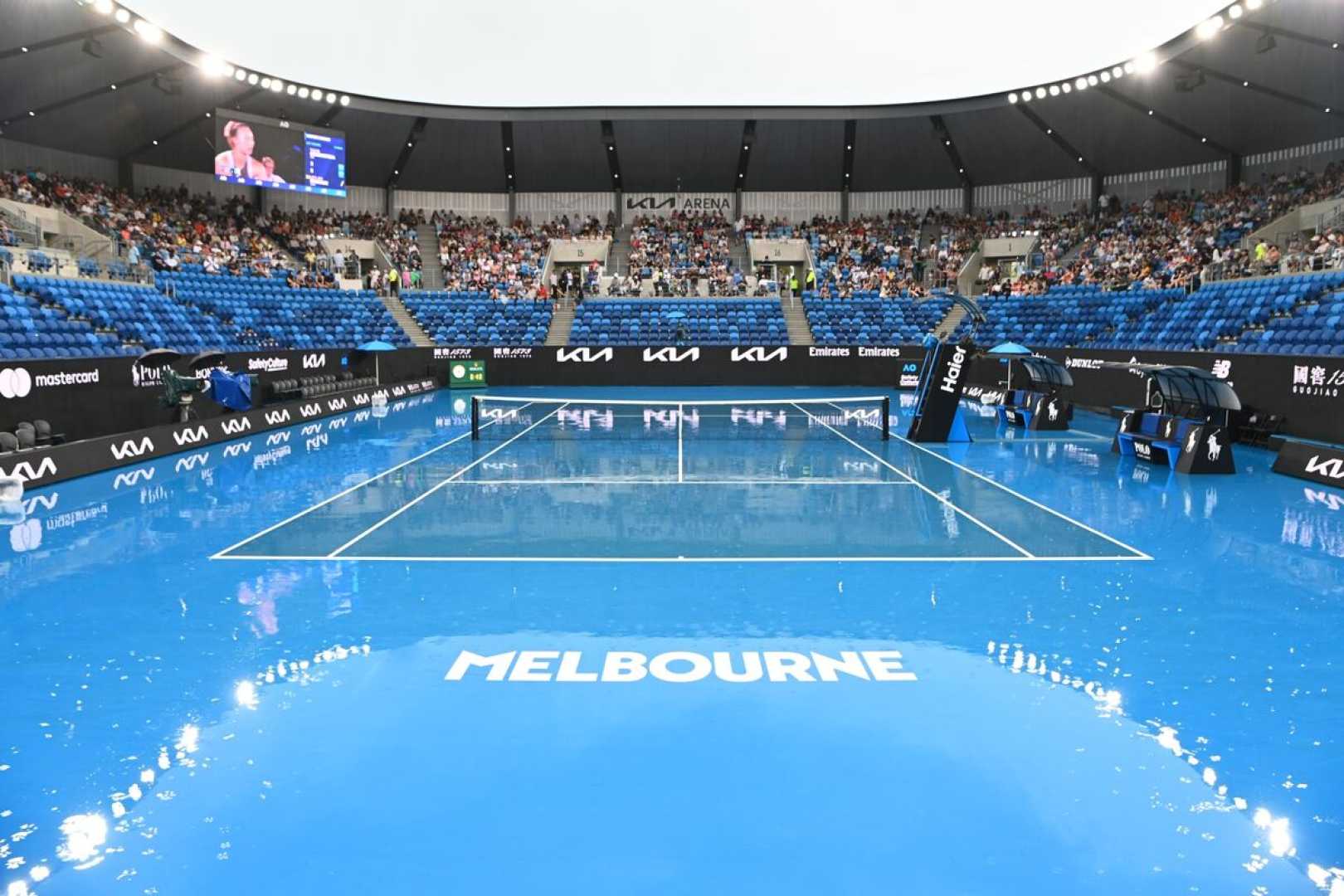News
Melbourne Storm Chaos: Power Outages, Flooding Disrupt Australian Open

MELBOURNE, Australia — A sudden and severe thunderstorm swept through Melbourne on Sunday, causing widespread flash flooding, power outages, and disruptions to the Australian Open. The storm, which struck around midday, brought heavy rainfall, damaging winds, and lightning strikes, leaving thousands without power and forcing tennis fans to seek shelter.
The Bureau of Meteorology reported that Olympic Park recorded 24.6 millimeters of rain in just 30 minutes, leading to flash flooding across the city. The State Emergency Service (SES) received 156 calls for assistance, including 55 related to flooding. Footscray emerged as the busiest SES unit, responding to 16 incidents.
In South Melbourne, a Toyota Corolla was partially submerged near Elwood Canal, while two other cars were caught in floodwaters under the Dudley Street bridge in West Melbourne. Major roads in Southbank, including City Road and Clarendon Street, were inundated, causing traffic chaos. VicTraffic reported flooding on the M80 Ring Road in Melbourne’s north.
The storm also disrupted public transport, with delays on the Cranbourne, Pakenham, and Hurstbridge train lines due to weather-related issues and equipment faults. Public Transport Victoria urged commuters to plan ahead as services were temporarily suspended.
At Melbourne Park, the first day of the Australian Open was thrown into disarray. Play on outside courts was suspended until at least 6 p.m., while the roof at Rod Laver Arena was closed to allow matches to continue after a brief delay. Tennis fans scrambled for cover as rain lashed the venue.
The Bureau of Meteorology issued a severe thunderstorm warning at 12:25 p.m., cautioning residents of Greater Melbourne and parts of West and South Gippsland about potential flash flooding, damaging winds, and large hailstones. By 3:17 p.m., the warning was extended to cover much of the High Country and Gippsland, where a 91 km/h wind gust was recorded at East Sale airport.
Firefighters remained on high alert as the storm moved into Gippsland, bringing dozens of lightning strikes. A bushfire in Kangaroo Swamp Nature Conservation Reserve, ignited by a lightning strike, prompted a watch-and-act warning before being downgraded. In Geelong, another storm cell caused similar havoc earlier in the day.
Power outages affected thousands of Victorians. Jemena reported 4,029 customers without power in Melbourne’s north-west, while United Energy noted 1,623 outages in the south-east. Powercor and AusNet also reported widespread disruptions across western and eastern Victoria. Scienceworks in Spotswood closed early due to a power outage.
By 4:40 p.m., Olympic Park had recorded 30.6 millimeters of rain since 9 a.m., exceeding earlier forecasts. The Bureau of Meteorology defended its warnings, stating that a thunderstorm forecast posted on X at 9:35 a.m. had alerted residents to the potential for severe weather.
The storm’s impact underscored the challenges of managing extreme weather events in urban areas, particularly during major events like the Australian Open. Authorities urged residents to avoid floodwaters and stay informed about further warnings.












